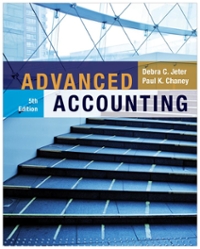On January 1, 2009, Perelli Company purchased 90,000 of the 100,000 outstanding shares of common stock of
Question:
On January 1, 2009, Perelli Company purchased 90,000 of the 100,000 outstanding shares of common stock of Singer Company as a long-term investment. The purchase price of $4,972,000 was paid in cash. At the purchase date, the balance sheet of Singer Company included the following:
Current assets..............$2,926,550
Long-term assets.............3,894,530
Other assets.............759,690
Current liabilities.............1,557,542
Common stock, $20 par value........2,000,000
Other contributed capital.........1,891,400
Retained earnings.............1,621,000
Additional data on Singer Company for the four years following the purchase are:
.png)
Required:
Prepare journal entries under each of the following methods to record the purchase and all investment-related subsequent events on the books of Perelli Company for the four years, assuming that any excess of purchase price over equity acquired was attributable solely to an excess of market over book values of depreciable assets (with a remaining life of 15 years). (Assume straight-line depreciation.)
A. Perelli uses the cost method to account for its investment in Singer.
B. Perelli uses the partial equity method to account for its investment in Singer.
C. Perelli uses the complete equity method to account for its investment inSinger.
Common stock is an equity component that represents the worth of stock owned by the shareholders of the company. The common stock represents the par value of the shares outstanding at a balance sheet date. Public companies can trade their stocks on... Balance Sheet
Balance sheet is a statement of the financial position of a business that list all the assets, liabilities, and owner’s equity and shareholder’s equity at a particular point of time. A balance sheet is also called as a “statement of financial...
Step by Step Answer:






